Yarrow: Benefits of this Ancient Healing Herb
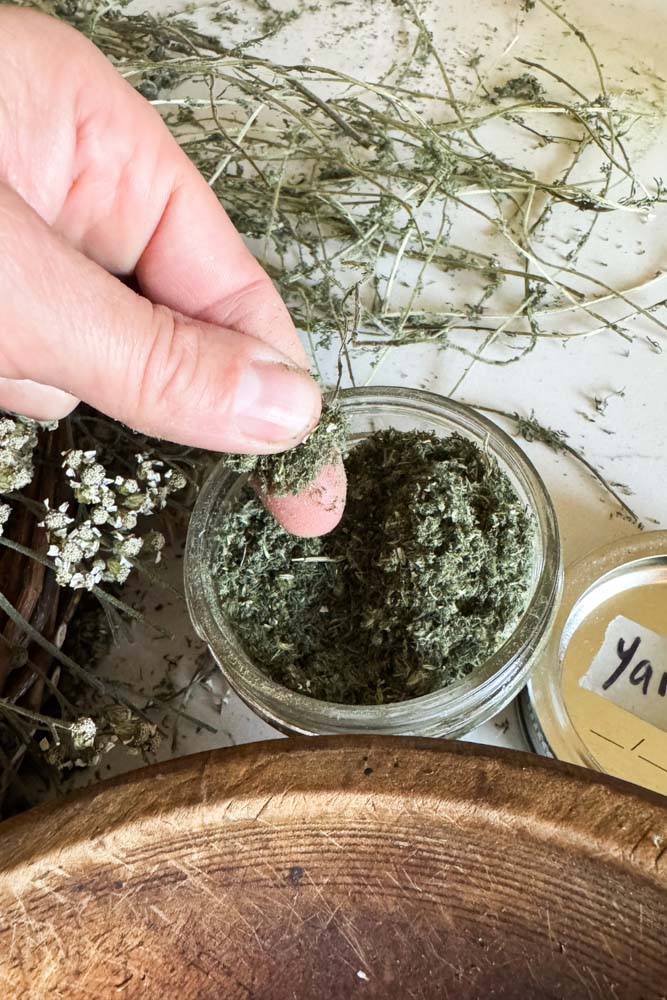
Primarily, we use yarrow as a lovely cut flower, but it has so much more potential! It’s tough, versatile, and still doing what it did thousands of years ago: helping the healing process. Discover the uses of this ancient healing herb.
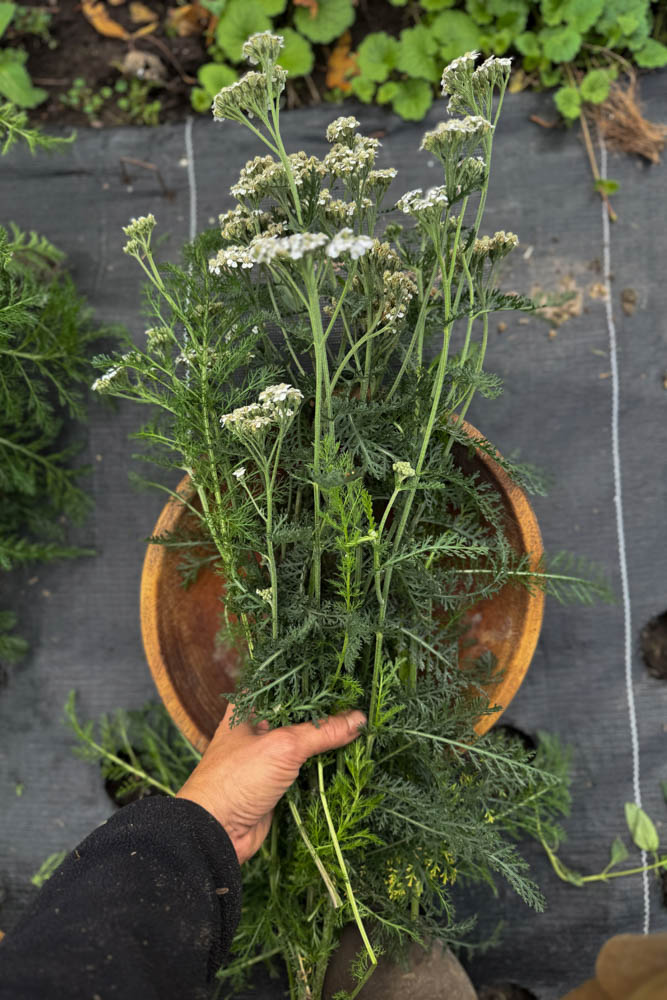
An Herb with Ancient History
When I started growing Yarrow in my garden several years ago, I hadn’t yet seen its true remedial capability until I found one of my chickens lying, injured and bleeding in the yarrow patch. I got her cleaned up and used some of our dried yarrow to stop the bleeding so the others would leave her alone (some of you know how ruthless chickens can be!). Since then, my ornamental and medicinal uses for this beneficial plant have gone hand in hand.
Legend says Achilles used this flowering herb to treat battlefield wounds — that’s where it gets its name, Achillea millefolium. It’s also called “Soldiers Woundwart” and “Bloodwort.” These flat, blooming white flowers make for a soft, neutral addition to the garden and also have medicinal properties when applied or consumed. Now, let’s dive into why dried yarrow has earned its spot on our shelf!
- Benefits of Yarrow
- Growing Yarrow
- Harvesting and Drying Yarrow
- How to use Yarrow
- Keeping Yarrow contained
- Questions about Yarrow Plants
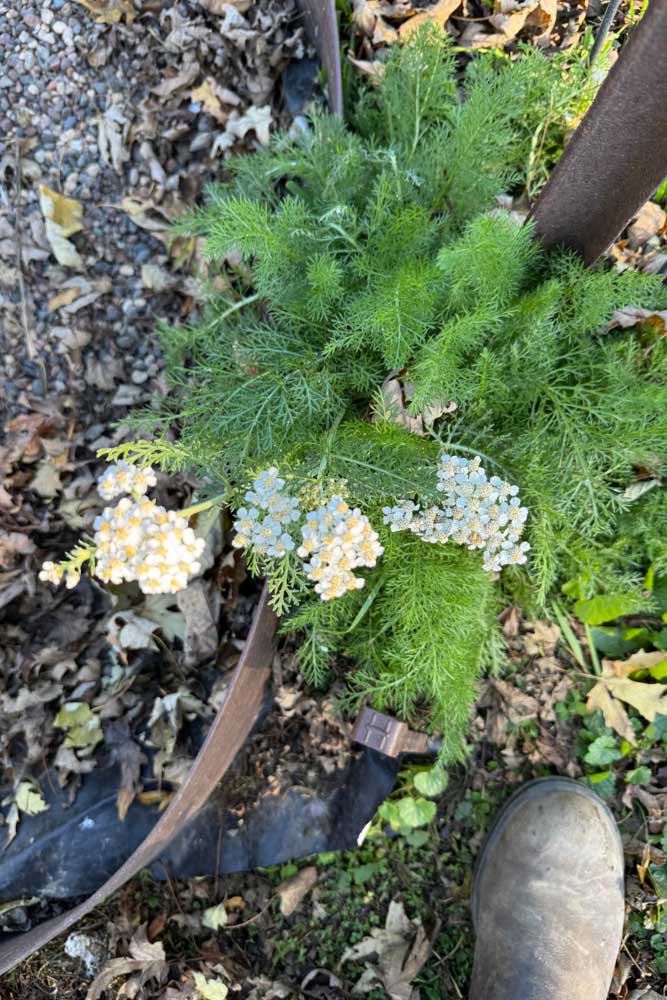
Benefits of Yarrow
What type of yarrow provides these benefits? We grow white flowering yarrow “Achillea millefolium” – this is the variety of yarrow that we have seen benefits from
- Wound Healing: The alkaloid “alchilleine” is responsible for it’s ability to reduce bleeding by reducing the time it takes for blood to clot
- Anti-Inflammatory: Flavonoids and phenolic acids have anti-inflammatory properties. Yarrow also contains Sesquiterpene lactones, which are specific to the Asteraceae family and are effective in treating inflammation
- Menstruation Pain: The natural anti-inflammatory and astringent properties in yarrow has long been used to aid in menstrual pain
- Digestive Support: Yarrow can aid in digestion by stimulating bile production
- Immune Support: Antioxidant and antimicrobial properties make this dried herb a good choice for boosting your immune system
Growing Yarrow
The Yarrow Plant is a perennial in USDA zones 3-8 making this a healthy perennial for us here in Zone 4b in Southeastern, Minnesota. I plant my yarrow with the rest of the garden in spring and harvest it in the fall. Our garden receives full sun, and yarrow thrives in these conditions.
Wild yarrow grows naturally across the northern hemisphere in North America, Europe, and Asia. There are many different varieties, including Red Velvet, New Vintage Violet, and Coronation Gold all in the Asteraceae family.
Harvesting and Drying Yarrow
When the weather takes a turn and the days get shorter, I harvest all of our yarrow, along with the rest of the abundance in our garden, and take it inside to dry. If you’ve been following along you have probably seen my flower drying rack in the background of my videos with an abundance of flowers hanging from the pulley system I created in our garage. This system works to bulk dry all of the lovely blooms I pull from the garden and is made to dry herbs just as well! After pulling the stems from the garden, I give them a good trim and set them to hang upside down for 1 to 2 weeks.
You can harvest yarrow throughout the summer, too. Make sure to harvest when the flowers are completely bloomed. I will go out into the garden with my scissors, snip the stems, and make sure to leave enough room on the stem for continual growth throughout the season.
Tip: Before drying is a good time to wash and wipe off any excess dirt or bugs hanging on from these blooms – this allows them to stay fresh and be ready to use once dried.
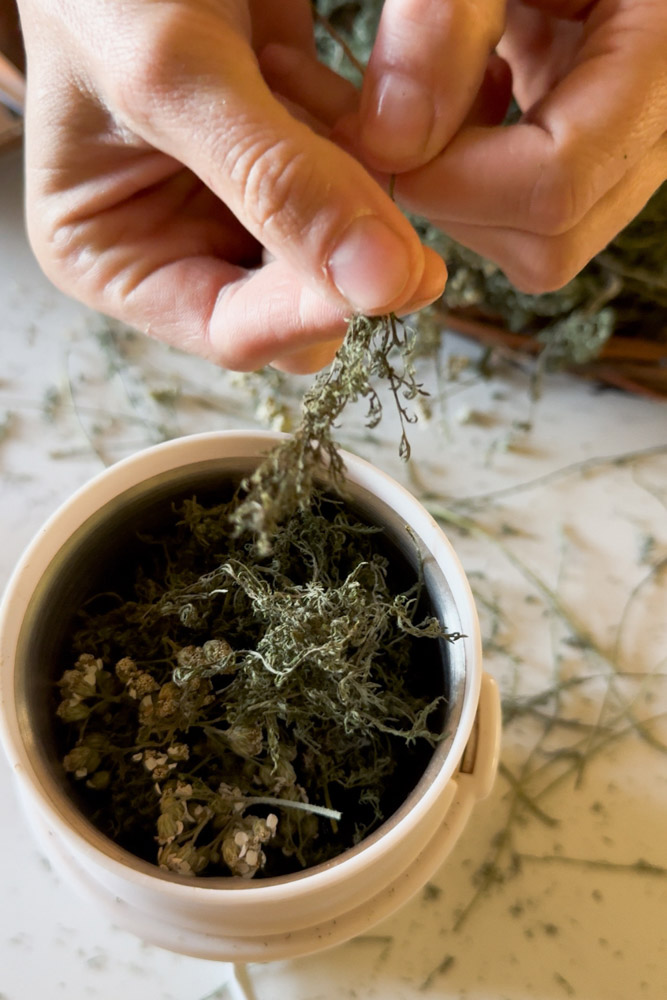
How to use Yarrow
The leaves and flowers, yarrow’s “above-ground” properties are what provide the benefits.
Medical
• Yarrow Tea: Add a pinch of dried yarrow into your boiling water and let it steep for yarrow tea that helps with colds and digestion.
• Sprinkle into your Bath: Added to a bath, directly or mixed into a bath salt (like our wintertime version) will soothe skin and calm the mind.
• First Aid: Mix dried yarrow into your over-the-counter salve for small cuts and scrapes to stop bleeding and promote healing.
• Ground up and keep on hand: Keep yarrow on hand by simply grinding it up and sealing it into a jar — because when there’s an injury on an animal or us, it’s so nice to have on hand!
Ornamental
- Dried flower bouquets: Yarrow works beautifully in dried flower bouquets.
- Scent: Yarrow essential oil can be diffused throughout your home or added to body washes and soap. Achillea millefolium has a strong, earthy scent.
A word before using or consuming Yarrow
Before you harvest this herb to use or consume, be mindful that with any natural compound, our bodies react differently. It is recommended to talk with your healthcare provider before consuming yarrow. Also be aware that this herb can be toxic to your animals when choosing where to grow.
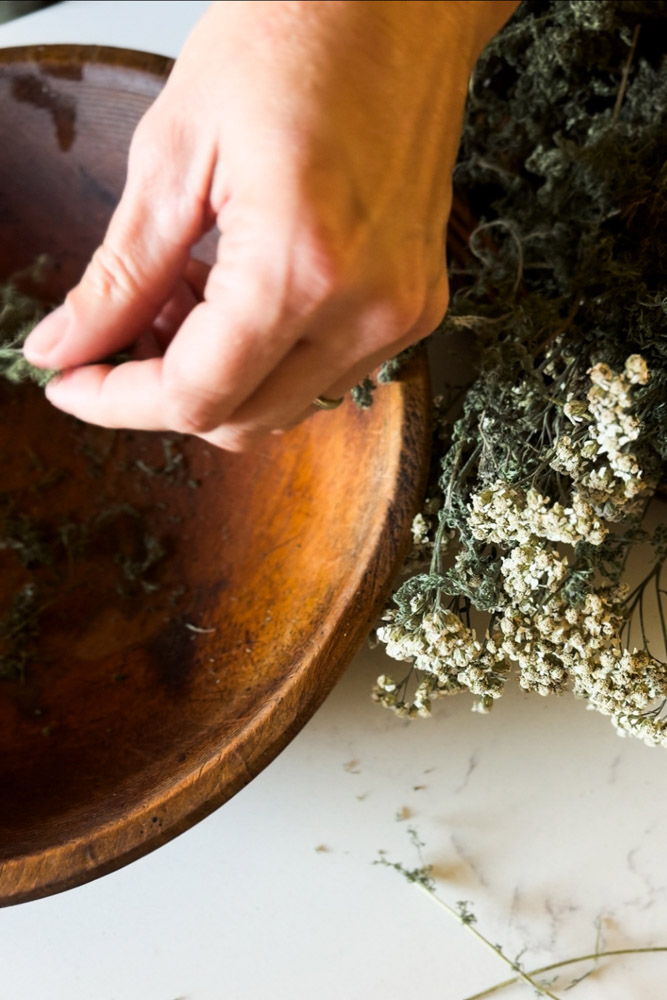
How to Keep your Yarrow Contained:
So many folks have commented in socials that they, too, love this plant in their garden but it can be tough to contain as yarrow’s roots grow deep. Here is how you can plant and care for yarrow successfully
1. Give It Boundaries
Plant yarrow in a spot where it can spread a little — but not everywhere. Raised beds, rock gardens, or borders with stones or metal edging make perfect homes. Its roots spread underground, so a good barrier keeps it in its lane.
2. Deadhead Before It Seeds
Yarrow is a generous self-seeder. As soon as the flowers start to fade, clip them back. This keeps your garden looking neat and prevents surprise yarrow patches next spring.
3. Divide Every Few Years
Every two to three years, dig up your yarrow clumps in early spring or fall. Keep the healthiest center roots and share or compost the rest. This helps control size and keeps the plant happy and blooming strong.
4. Keep It Lean and Dry
One of the reasons yarrow spreads so easily is that it doesn’t need much. Too much fertilizer or water only encourages it to take over. Plant it in well-drained soil and let it thrive on a little neglect.
5. Stay Ahead of Runners
Every season, take a quick walk around your yarrow patch and pull up any runners before they settle in. It’s easier to manage a few strays now than a whole invasion later.
6. Keep the Charm, Lose the Chaos
Yarrow doesn’t mean to be a troublemaker — it’s just a little too good at surviving. With a bit of attention and the right setup, you can enjoy its long blooms, pollinator appeal, and herbal uses without letting it overrun your garden.
Let it thrive — but on your terms.


Questions about this beneficial plant
Is yarrow a perennial in my area?
It is a healthy perennial in USDA zones 3 – 9, check your location on the agricultural zone map
How should I store Yarrow? How long does it last?
An airtight container works perfectly to store groud up yarrow and keep until the next growing season
What does Yarrow taste like?
Remember the health benefits when you sip on a bitter, earthy cup of yarrow tea! A steaming cup of this tea has a distinct, earthy taste, but can pair well with other flavorings of your choice like peppermint tea.
Pin for Later!

Closing Thoughts
There’s nothing I love more than finding ways to utilize what grows right up from the Earth, and in many cases such as this one, my own backyard. Enter the cold months with the knowledge that you are giving your body the natural remedies it needs to support you through this season!
More ways to practice Preventive Health

Affiliate Disclosure & Content Disclaimer
This post may contain affiliate links from a paid sponsor, Amazon or other program. When you use these links to make a purchase I earn a small commission at no extra cost to you. This allows me to continue creating the content that you love. The content in this article is created for information only and based on my research and/or opinion.
Emily T.
DAILY INSPIRATION ON THE GRAM @hearty.sol
it's hip to be square!
View comments
+ Leave a comment